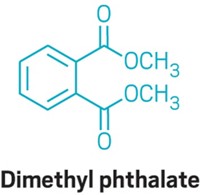Advertisement
Grab your lab coat. Let's get started
Welcome!
Welcome!
Create an account below to get 6 C&EN articles per month, receive newsletters and more - all free.
It seems this is your first time logging in online. Please enter the following information to continue.
As an ACS member you automatically get access to this site. All we need is few more details to create your reading experience.
Not you? Sign in with a different account.
Not you? Sign in with a different account.
ERROR 1
ERROR 1
ERROR 2
ERROR 2
ERROR 2
ERROR 2
ERROR 2
Password and Confirm password must match.
If you have an ACS member number, please enter it here so we can link this account to your membership. (optional)
ERROR 2
ACS values your privacy. By submitting your information, you are gaining access to C&EN and subscribing to our weekly newsletter. We use the information you provide to make your reading experience better, and we will never sell your data to third party members.
Environment
New Method To Understand The Effects Of Drinking Water By-products On Human Health
Pollutants: Researchers combine chemical and biological assays to reveal preliminary link to pregnancy outcomes
by Catherine M. Cooney
September 20, 2012

Every sip of tap water carries very low levels of by-product chemicals created by the disinfection process. But researchers have had a hard time determining whether exposure to these chemicals leads to health problems. A new analysis of drinking water samples from five European countries starts to clear up the picture through a unique approach that combines chemical, biological, and epidemiological data. The preliminary result: exposure to these by-product chemicals may lead to adverse pregnancy outcomes (Environ. Sci. Technol., DOI: 10.1021/es3024226).
Researchers consider drinking water disinfection one of the greatest public health achievements of the 20th century because it kills microbial pathogens that cause diseases such as cholera. Yet scientists have identified more than 600 disinfection by-products (DBPs), many of them toxic, including trihalomethanes and haloacetic acids. Because of animal and epidemiological studies suggesting links, environmental scientists debate whether DBP exposure can cause adverse pregnancy outcomes such as low birth weight and premature birth.
Michael J. Plewa of the University of Illinois, Urbana-Champaign, and Susan D. Richardson of the Environmental Protection Agency’s National Exposure Research Laboratory wondered whether analytical chemistry, along with biological techniques that reveal damage to cells and genes, could help clear up the mystery. Most epidemiological studies on DBP exposures have not used such expensive, time-consuming characterization techniques.
Plewa and his team obtained drinking water samples from a five-country epidemiological study involving 23,000 pregnant women. The study is known as Health Impacts of Long-Term Exposure to Disinfection By-products in Drinking Water, or HIWATE. The researchers isolated the dissolved organic matter—all of the organic compounds found in the water samples--and identified DBPs using gas chromatography/mass spectrometry. In samples from 11 water distribution systems from seven cities, Plewa and his team found 96 disinfection by-products. The by-products’ number and concentration levels varied across the samples, reflecting the collection sites’ diverse water sources and disinfection processes.
The scientists then studied how organic compounds from the drinking water affected cells. The researchers exposed Chinese hamster ovary cells for 72 hours to different concentrations of the organic material from each water sample and measured how many cells survived.
As the researchers expected, as the number of DBPs increased, so did the water samples’ toxicity to the cells. The water samples from Barcelona and Valencia, Spain had the highest numbers of by-products, 86 and 83, respectively. The lowest number, 13, appeared in water from Modena, Italy. They found that, at the same concentration, organic material from water from Barcelona was eight times more toxic than that from Modena.
To measure DNA damage from the by-products, the researchers exposed hamster cells to the samples’ organic materials for a shorter time, four hours, and then used a technique known as single cell gel electrophoresis. The researchers were surprised that the level of damage to genes didn’t correlate well with the number of DBPs they’d found in the samples. Plewa says the data suggest that their analytical methods must have missed some DNA-damaging compounds in the samples. He suspects they include by-product chemicals no one has identified yet.
The team next compared their results to the HIWATE project’s published epidemiological results. They found that babies born with low birth weight tended to have mothers who drank water with high numbers and concentrations of DBPs, and with high cytotoxicity and genotoxicity. This conclusion is tentative, Plewa says, because his team compared the number of DBPs with only a small set of the HIWATE data, from Spain, Lithuania, and France. Comparing detailed analyses with epidemiological studies is difficult, Plewa explains. The HIWATE team will tackle this challenge by attempting to integrate Plewa’s data into their future epidemiological work.
David A. Savitz of Brown University says that the researchers’ genotoxicity test points toward a new way to identify disinfection by-products that could cause human health concerns. He praises the study’s novel use of both analytical chemistry and biological assays.





Join the conversation
Contact the reporter
Submit a Letter to the Editor for publication
Engage with us on Twitter